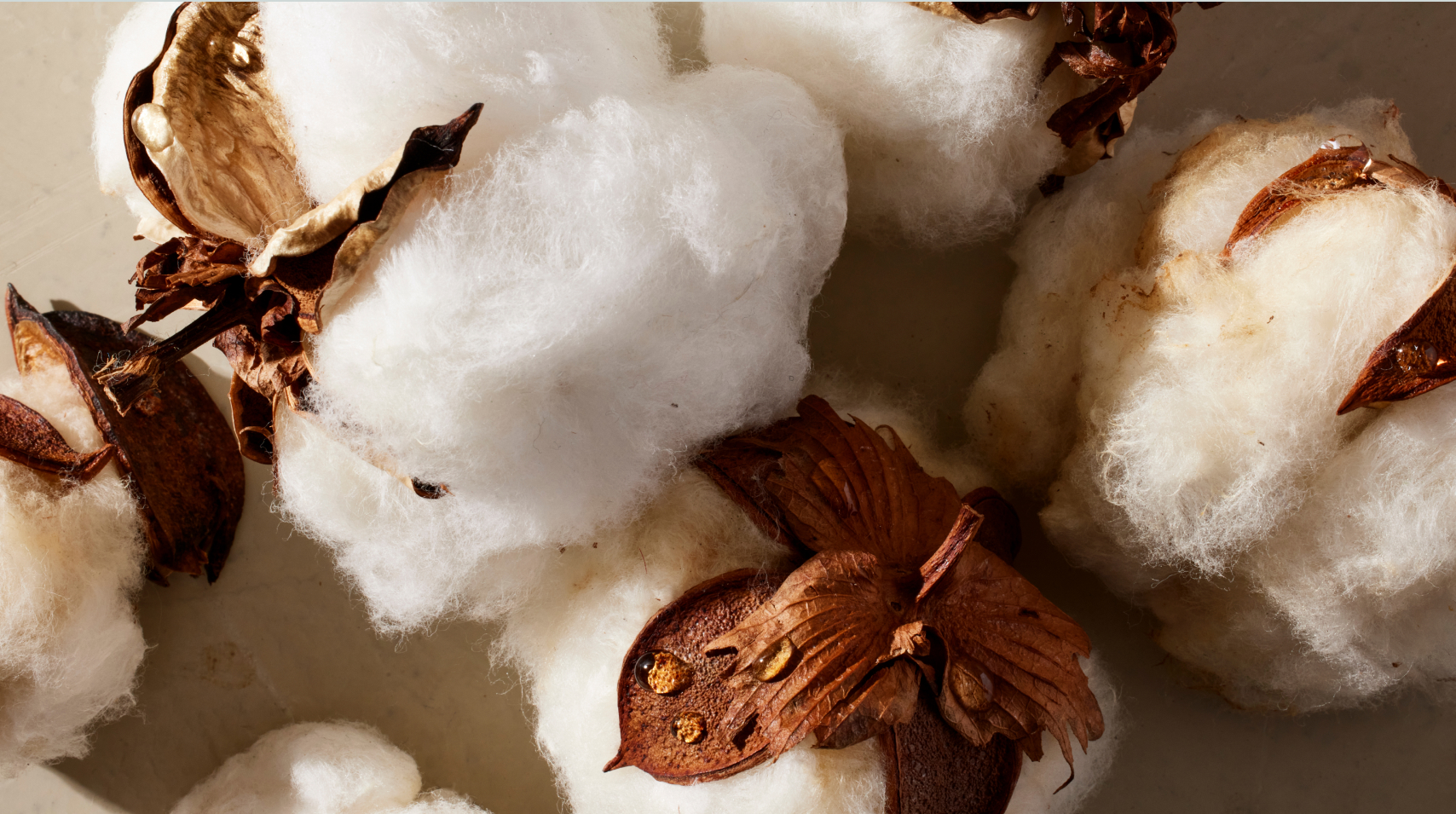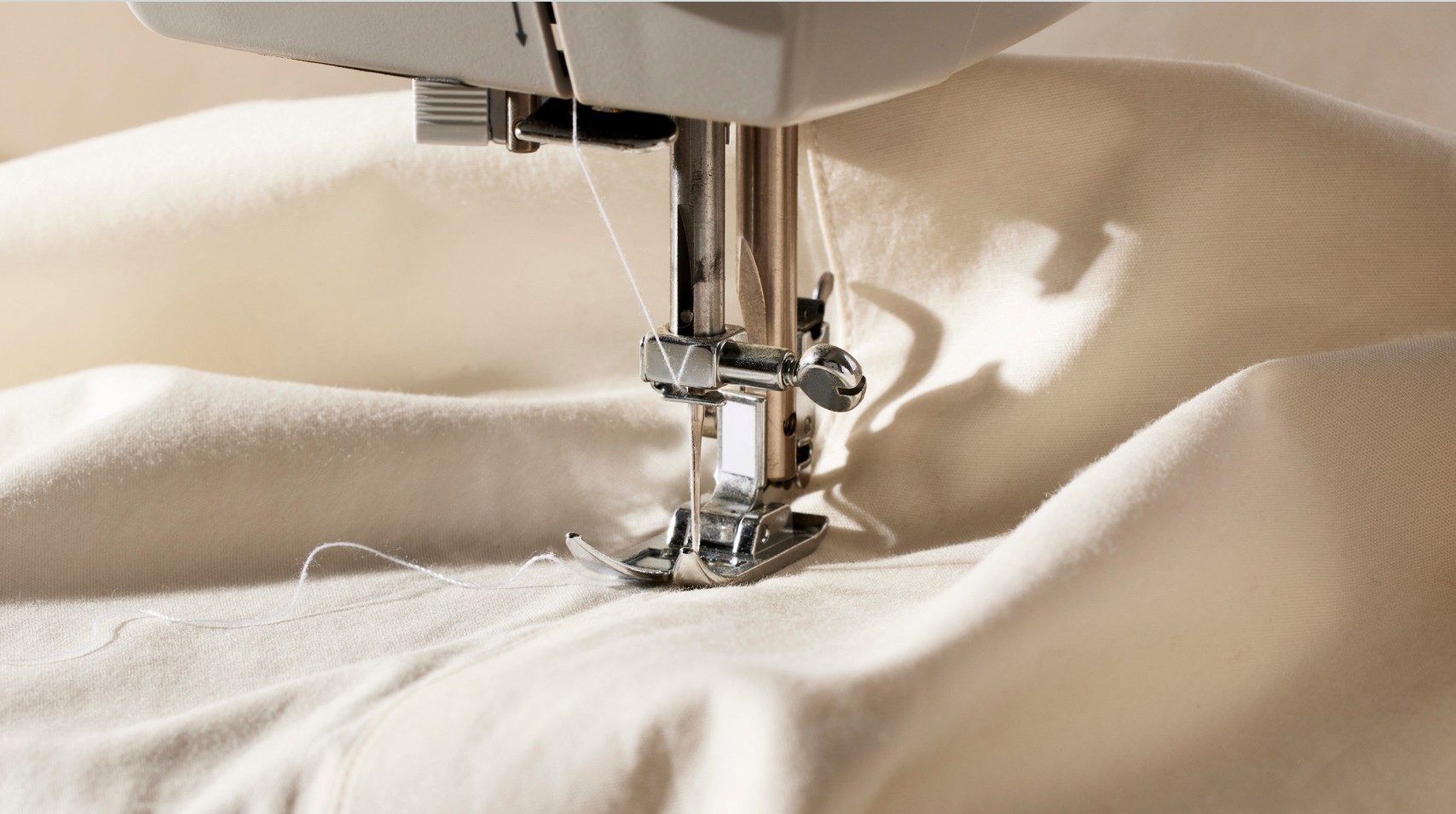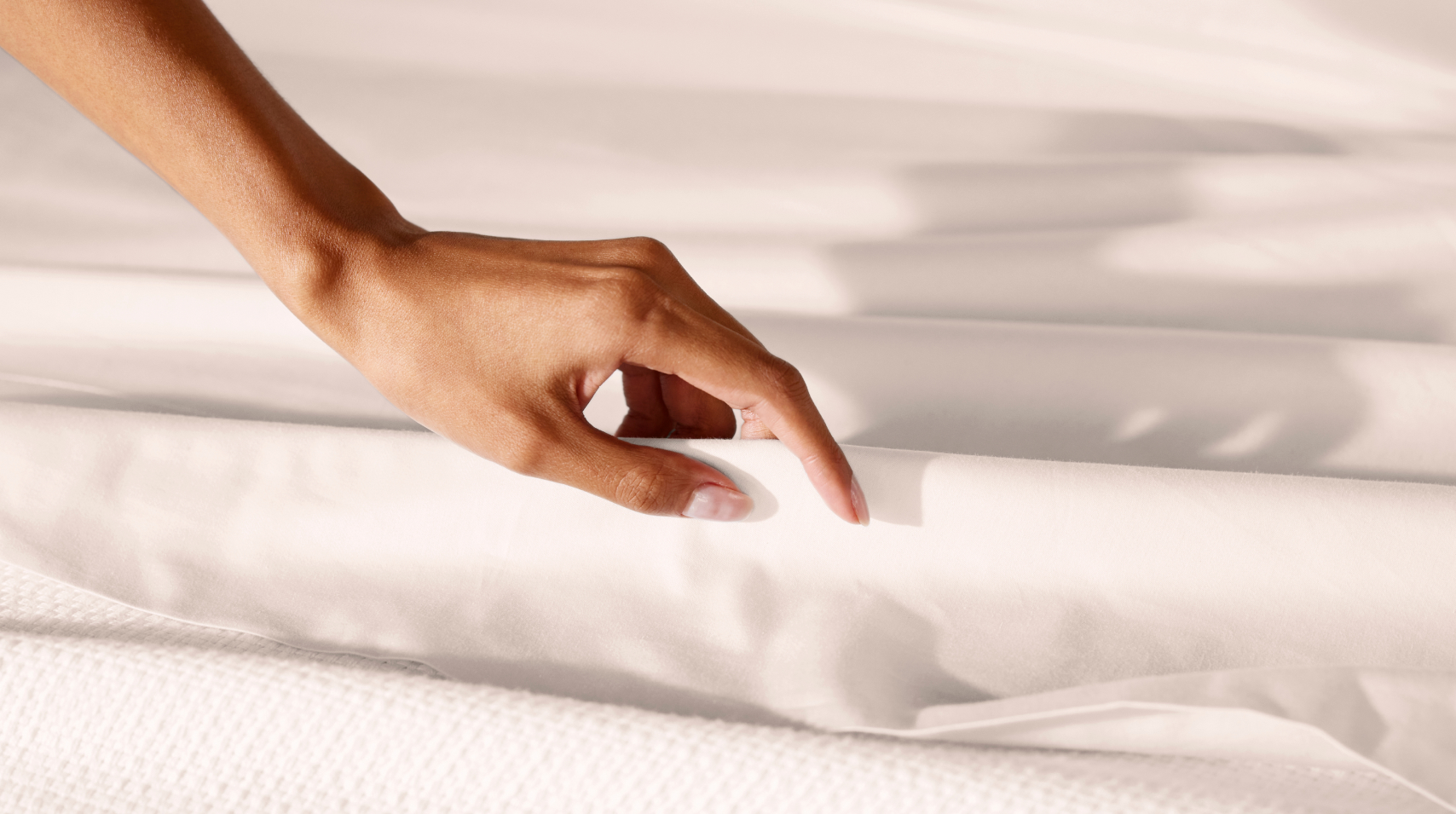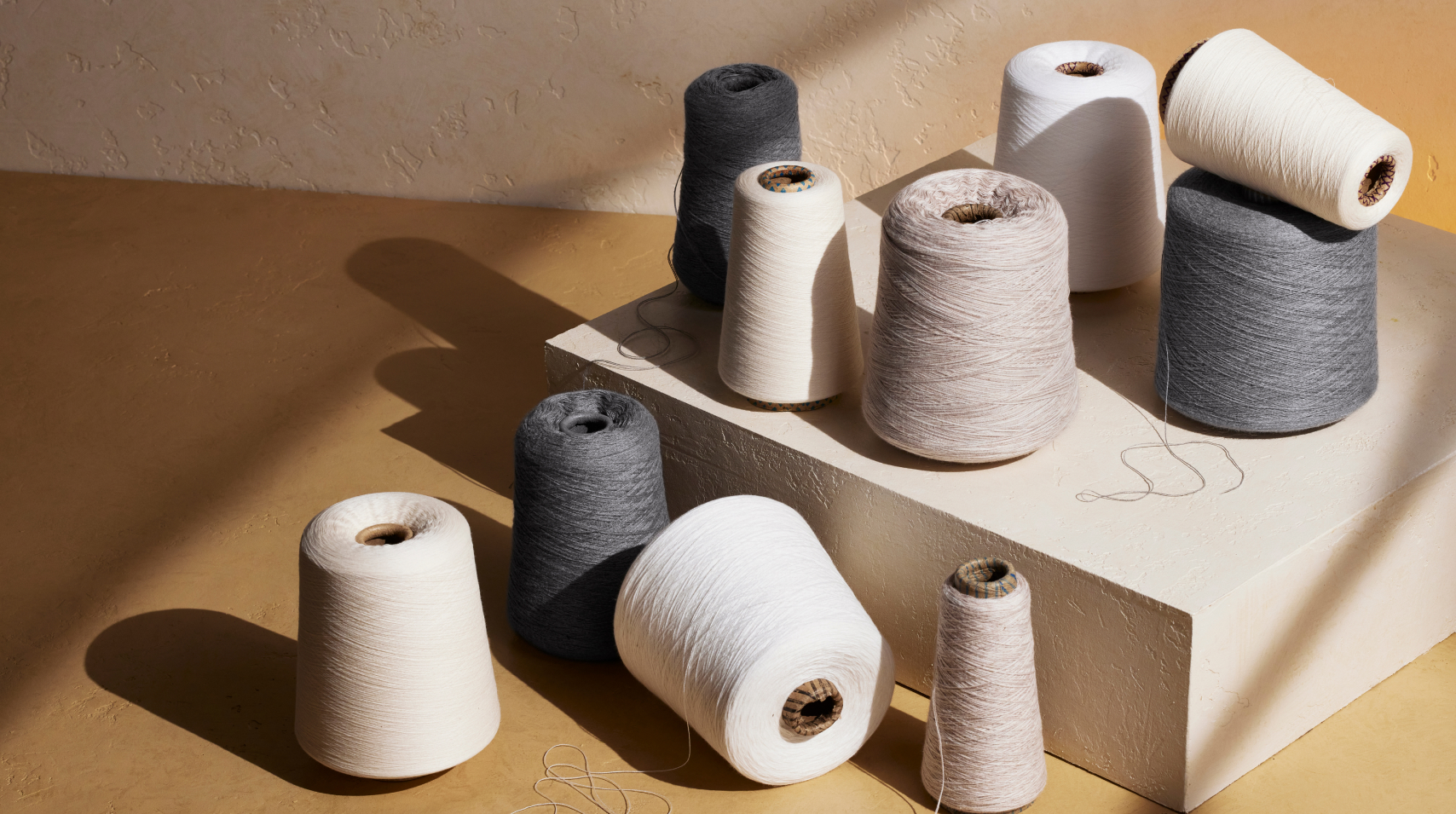Cotton sheets come in a variety of designs and weaves, each with their own look and feel. The best bed sheets can be made from cotton fibers of varying lengths, and can be crafted in different weaves to achieve many distinct textures. Finding the best option can be confusing, but there’s no “right” or “wrong” decision when choosing between different types of cotton sheets. The best option will vary from person to person, depending on their sleep preferences, what climate they live in, and their budget.
To help you make a more informed decision, we’ll discuss the differences between types of cotton sheets and how to choose cotton sheets that will last you for years to come.

Types Of Cotton Used To Make Bed Sheets
Cotton is diverse in that it’s grown and cultivated in different ways. When choosing cotton sheets, you may come across any of the following cotton sheets during your search.
Traditional Cotton
There is little transparency when products are simply labeled “cotton,” so the term “cotton” can be vague. Without knowing where it was grown, how it was processed, or how it was woven, cotton can mean a variety of different things. For better transparency, look for other descriptors like “organic” or “long-staple” to better understand the quality of the cotton.
Organic Cotton
Organic cotton, by definition, is cotton that’s free from harmful pesticides, fertilizers, or other chemicals. There are several major certifications surrounding the term that can offer you further insight into what you’re getting. For example, the GOTS certification guarantees that your sheets were made under ethical conditions with high quality organic cotton fibers.
Short-Staple Cotton
Cotton comes in short, long, and extra-long fibers, or staple lengths. The difference in lengths offers a difference in quality—the longer the staple length, the softer and more luxurious the cotton will feel when it’s woven. Short-staple cotton is made from cotton fibers that have a short staple length, and is usually used to make more hearty and durable materials, like denim or flannel. Most of the world’s cotton is short staple length.
When it comes to bedding, short-staple cotton sheets are usually not as high quality or desirable as long-staple cotton. On the other end of the spectrum, extra-long fibers are extremely difficult to grow organically. That’s why Boll & Branch focused on sourcing the longest staple-length cotton we could grow organically, that offers the greatest benefits.
Long-staple Cotton
Long-staple cotton is made from cotton fibers that measure between one and two inches. Fabrics made of long-staple cotton pill, wrinkle, and fade less than fabrics made of shorter staple lengths. Certain long-staple cotton sheets even get softer with every wash.
Egyptian Cotton
Egyptian cotton originally referred to cotton grown in Egypt, but there are unfortunately no significant regulations surrounding how the term is used on packaging and in marketing. True Egyptian cotton is rare and luxuriously soft, which means it’s usually fairly expensive. Egyptian cotton may also not be grown or processed organically.
Supima Cotton
Another long-staple cotton, Supima cotton is exclusively grown in the US and is known for being both soft and long-lasting. Supima cotton is considered to be a premium cotton, and is a less expensive alternative to Egyptian cotton.
American Upland Cotton
Upland cotton is short-staple cotton, meaning it’s lower quality than Egyptian or Supima cotton. It’s still durable, but it isn’t nearly as soft as premium cotton.

Types Of Cotton Sheet Weaves
Not only is cotton grown all over the world and made from fibers of different lengths, the fibers can are also woven in a variety of ways to create different types of fabrics. In fact, common fabrics, like chambray and flannel are both woven using cotton threads.
Sateen
Sateen sheets are made in a specificweave pattern that gives them their luxuriously soft and silky feeling. For that reason, our Signature fabric is a sateen, made with a four-over-one-under weave that ensures an exceptionally soft, buttery hand-feel that gets softer with every wash.Sateen. Sateen is often confused with satin, as the names sound similar, but sateen and satin are in fact two different materials.
Percale
Percale fabric is made with a plain one-over-one-under weave that leaves cotton feeling cool and crisp, just like a fresh button down shirt. Percale sheets are frequently used by luxury hotels because they're naturally cooling and ideal for hot sleepers.
Flannel
Flannel sheets are made from cotton threads that have been brushed, giving them a soft, cozy, fuzzy feel. Flannel sheets are typically velvety and warm, making them ideal for colder climates or people who sleep cold. Our Flannel fabric offers a rare balance of warmth and breathability that can be enjoyed by even the warmest of sleepers, and is finished with our time-intensive brushing and shearing process to naturally reduce the appearance of pills.
Jersey
The term “jersey” refers to another way that fabric is knitted. Jersey is made from a blend of cotton and synthetic materials like polyester, making them very stretchy and warm. Jersey isn’t as long lasting, though, as other woven sheets like Percale. To make jersey sheets last longer, certain brands will add synthetic materials in, which can pill.
For that reason, we recommend avoiding jersey sheets and opting for organic sheets instead.

How To Choose Cotton Sheets
Choosing cotton sheets can be an overwhelming task, but here are the three main things you should look for:
How The Cotton Is Grown
Cotton can be grown either conventionally or organically, meaning with or without the use of synthetic pesticides and fertilizers. By opting for organic cotton instead of traditional cotton, you can have peace of mind that your cotton is free from toxins and harmful chemicals.
How The cotton Is Processed
How the cotton is processed is just as important as how it’s grown. Traditional cotton is often treated with dyes and other harsh chemicals that are harmful to both workers and sleepers.
To avoid any mystery surrounding how your sheets were both made and processed, we recommend looking for sheets that are toxin-free and ethically made. You can look for third-party certifications, like OEKO-TEX GOTS and Fair Trade, to help you find the safest options.
The Fabrication And How It’s Woven
Your sleep preferences will determine which weave or fabrication best supports your needs. For example, if you sleep hot, you’d be better off with a percale sheet set, while cold sleepers would sleep better with a flannel sheet. For something more universal, our buttery, breathable Signature fabric is the perfect all-season fabric.

Does Thread Count Matter?
While thread count is often used to describe quality, it’s just a measure of how many threads are in one square inch of fabric. But thread count doesn’t speak to the quality of the fabric or the cotton used, the type of chemicals applied to it, or the conditions under which the fabric was made. Thread count just can’t tell you the most important things you want to know about a fabric. Plus, different fabrics will naturally have different thread counts, and that doesn’t necessarily mean one is of higher quality than the other.
Instead, it’s more important to look for a fabric’s material, weave, and chemical composition.
